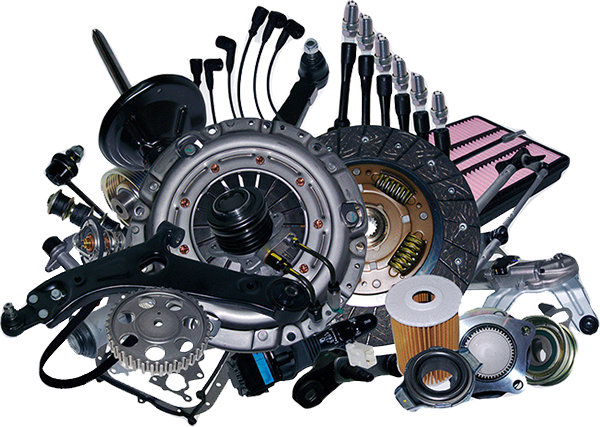
Integrating Eprescription Apps: Streamlining Prescription Management
In an era where efficiency and precision define the quality of care, Integrating eprescription apps has become essential for healthcare and veterinary practices. Prescription management, once a paper-heavy and error-prone process, has evolved into a fast, secure, and data-driven workflow. By integrating Eprescription apps with Electronic Medical Records (EMR) and Practice Information Management Systems (PIMS), providers can streamline every aspect of medication management—from creation to fulfillment—while maintaining compliance and improving patient outcomes.
The Shift Toward Integrated Prescription Management
The growing demand for digital transformation in healthcare is driving the widespread adoption of integrating Eprescription apps. The traditional prescription process—manually writing, verifying, and faxing orders—is gradually being replaced by systems that automatically synchronize with patient records and pharmacy databases.
Connecting Systems for Seamless Workflow
Integrating Eprescription apps bridges the gap between prescribers, pharmacies, and patients. It ensures that every medication order flows electronically through secure, interoperable channels. This connection not only saves time but also enhances the accuracy and traceability of prescriptions.
Reducing Manual Errors
One of the biggest challenges in healthcare is medication errors. Integrating Eprescription apps helps prevent issues caused by illegible handwriting, incomplete data, or manual input mistakes by ensuring prescriptions are electronically generated and transmitted with built-in validation checks.
Key Benefits of Integrating Eprescription Apps
Enhanced Workflow Efficiency
By integrating Eprescription apps, clinics can automate repetitive tasks such as refills, verification, and patient data updates. This automation frees up time for healthcare staff to focus on clinical decision-making and patient care rather than paperwork.
Faster Prescription Fulfillment
Integrating Eprescription apps ensures that prescriptions are instantly sent to pharmacies, significantly reducing delays and improving patient satisfaction. Pharmacies can verify, process, and dispense medications faster without follow-up calls for clarification.
Real-Time Data Access
A major advantage of integrating Eprescription apps is real-time access to patient information. Providers can review medical histories, allergies, and insurance details before issuing prescriptions, resulting in safer and more informed decisions.
How Integration Streamlines Clinical Operations
Simplified Data Management
When integrating Eprescription apps, data synchronization ensures that all prescription information—dosages, notes, and refills—automatically updates across EMR and PIMS systems. This consistency reduces redundancy and enhances coordination between care teams.
Improved Communication Between Systems
Through standardized APIs and data protocols, integrating Eprescription apps enables smooth communication between multiple healthcare platforms. This interoperability ensures that all stakeholders—from prescribers to pharmacies—have accurate, up-to-date information at every stage.
Cloud Technology: The Backbone of Integration
The rise of cloud computing has revolutionized integrating Eprescription apps by providing scalability, security, and accessibility.
Secure and Scalable Access
Cloud-based integrating Eprescription apps allow authorized users to securely access patient and prescription data anytime, anywhere. This flexibility is particularly valuable for healthcare providers managing multiple locations or offering telemedicine services.
Automated Maintenance and Compliance
With cloud technology, updates, compliance checks, and security patches happen automatically. Integrating Eprescription apps in the cloud ensures systems stay compliant with current regulations and require minimal IT intervention.
Overcoming Challenges in Integration
While the benefits are clear, integrating Eprescription apps can present challenges, particularly in legacy environments.
Compatibility and Standardization
Older EMR or PIMS systems may not support modern data standards. To ensure smooth integrating Eprescription apps, it’s essential to align software with interoperability protocols like HL7 and FHIR, allowing consistent and reliable data exchange.
Training and User Adoption
Even the most advanced integration can fail if staff aren’t properly trained. A successful integrating Eprescription apps strategy includes comprehensive user training, ensuring that physicians, pharmacists, and administrative staff fully understand how to leverage the integrated tools effectively.
The D.A.W. Systems, Inc. Advantage
With nearly three decades of experience, D.A.W. Systems, Inc. leads the industry in integrating Eprescription apps that deliver reliability, security, and compliance. Their flagship product, ScriptSure Cloud E-Prescribing, is designed to integrate seamlessly with EMR and PIMS systems across both human and veterinary medicine.
ScriptSure Cloud: Integration Made Simple
ScriptSure Cloud provides secure APIs that simplify integrating Eprescription apps into existing systems. Its advanced functionality allows healthcare providers to manage prescriptions, track medication histories, and ensure compliance—all from one centralized platform.
Supporting Compliance and Security
As a trusted industry pioneer, D.A.W. Systems, Inc. ensures that integrating Eprescription apps adheres to all relevant standards, including DEA and HIPAA regulations. Their robust encryption and authentication measures guarantee that sensitive patient data remains fully protected.
The Future of Prescription Management
The future of integrating Eprescription apps lies in intelligent automation and cross-platform collaboration. Artificial intelligence will soon analyze prescribing trends, identify risks, and provide predictive insights to enhance treatment outcomes. Meanwhile, deeper integration between mobile devices, telemedicine tools, and pharmacies will make prescription management even more seamless.
By integrating Eprescription apps across cloud-based networks, healthcare providers will move toward a unified ecosystem where prescriptions, patient records, and pharmacy interactions coexist harmoniously—reducing errors and maximizing efficiency.
Conclusion
Prescription management is evolving, and integrating Eprescription apps is at the heart of this transformation. By connecting Eprescribing tools with EMR and PIMS systems, healthcare providers achieve faster workflows, reduced errors, and better patient care. With innovative solutions from D.A.W. Systems, Inc., clinics and veterinary practices can embrace technology that streamlines daily operations while maintaining the highest standards of compliance and safety. The future of efficient prescription management starts with one essential step: integrating Eprescription apps to build a smarter, connected healthcare system.


